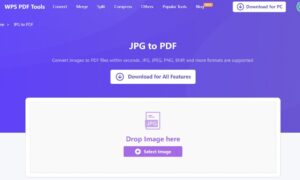Food Container Market Overview:
With the growing demand for packaged food products across the globe, the food container market revenue growth is said to be driven more in the upcoming years. Transportation of food products in containers is another major factor that is anticipated to propel global market growth. Packaged foods primarily include ready-to-eat (RTE) meals, RTE convenience foods, frozen meals, cake mixes, snacks, desserts, and perishable items packed in tin cans. Due to the increasing demand for such products, the production of these containers is supposed to increase rapidly over the next few decades. The global COVID-19 pandemic hit the market in 2020, and thus there was a diminishing growth rate. But, soon as trade stabilizes again, a speedy recovery can be witnessed.
Food items come under the essential category and hence the market did not suffer rapidly amid the pandemic. But, due to global restrictions on transportation, travel bans, and disruptions in the supply chain, many big companies suffered huge losses. Besides, numerous companies are encouraging people to use food containers made of tin as they have longer shelf lives, compared to other materials. Increasing awareness of sustainability would also augment growth in the upcoming years.
Food Container Market Dynamics:
Drivers:
Globally, even small-scale businesses have started participating actively in the food container market. Till the early 1990s, this was not the case. Consumer demand has started evolving because of their fast-paced lifestyles, which, in turn, is further surging the demand for packed food items. Food containers are very easy to carry and store food. They also enable the consumption of food anytime, anywhere, thereby saving a lot of time. Rapidly increasing population, urbanization, and changing lifestyles due to the increasing number of working people are anticipated to propel the demand for food containers in the upcoming years.
In addition, increased government regulations to control and reduce greenhouse gas emissions in the food and beverage industry are set to drive the demand for sustainable packaging. The food container industry is driven by the increasing customer base of these products across the globe. An increasing number of working women and the high demand for convenient food packaging around the world are also expected to boost growth. Rising innovation & technological advancement and rapid changes in lifestyles would surge the demand for convenient food products and foster market growth.
Restraints:
Food containers preserve the quality of food products. This also enables people to travel safely with the food item for long distances, internationally. But, at the same time, the food gets contaminated because sometimes, consumers tend to purchase and utilize cheap storage containers made up of harmful materials. It often leads to damage to food products. The second biggest challenge for food container manufacturers is to keep up with changing consumer preferences. Thus, the production of high-quality, airtight, leak-free, and transportable containers are necessary. Along with this, several countries are currently following stringent government restrictions for increasing food safety and protection. This can also make the product expensive.
Product Type Outlook:
Based on product type, the market is segmented into paperboard, rigid packaging, flexible packaging, metal, glass, plastic, and bottles & jars. The flexible packaging segment is set to account for higher growth in the forecast period. This growth is attributable to the rising preference for the product among consumers. Also, it is considered to be the most convenient mode of packaging. The bottles & glass jar segment, on the other hand, is also set to grow because of the availability of clear, colored, and frosted products. Their ability to keep food fresh is also high.
Application Outlook:
The food container industry is largely segmented into dairy products, grains, processed meat, fruits & vegetables, and bakery. An increasing number of supermarkets in developed, as well as developing countries is likely to elevate purchases and thus boost the demand for food containers throughout the projected timeframe. The processed meat segment, on the hand, is set to showcase significant growth in the global market, owing to rising consumer demand for various meat and meat products. Frozen desserts, ice creams, waffles, and pancake batters are stored in paperboard tubs and glass jars to keep them intact. These would also gain traction shortly.
Get a glimpse of the in-depth analysis through our Copy Sample



































